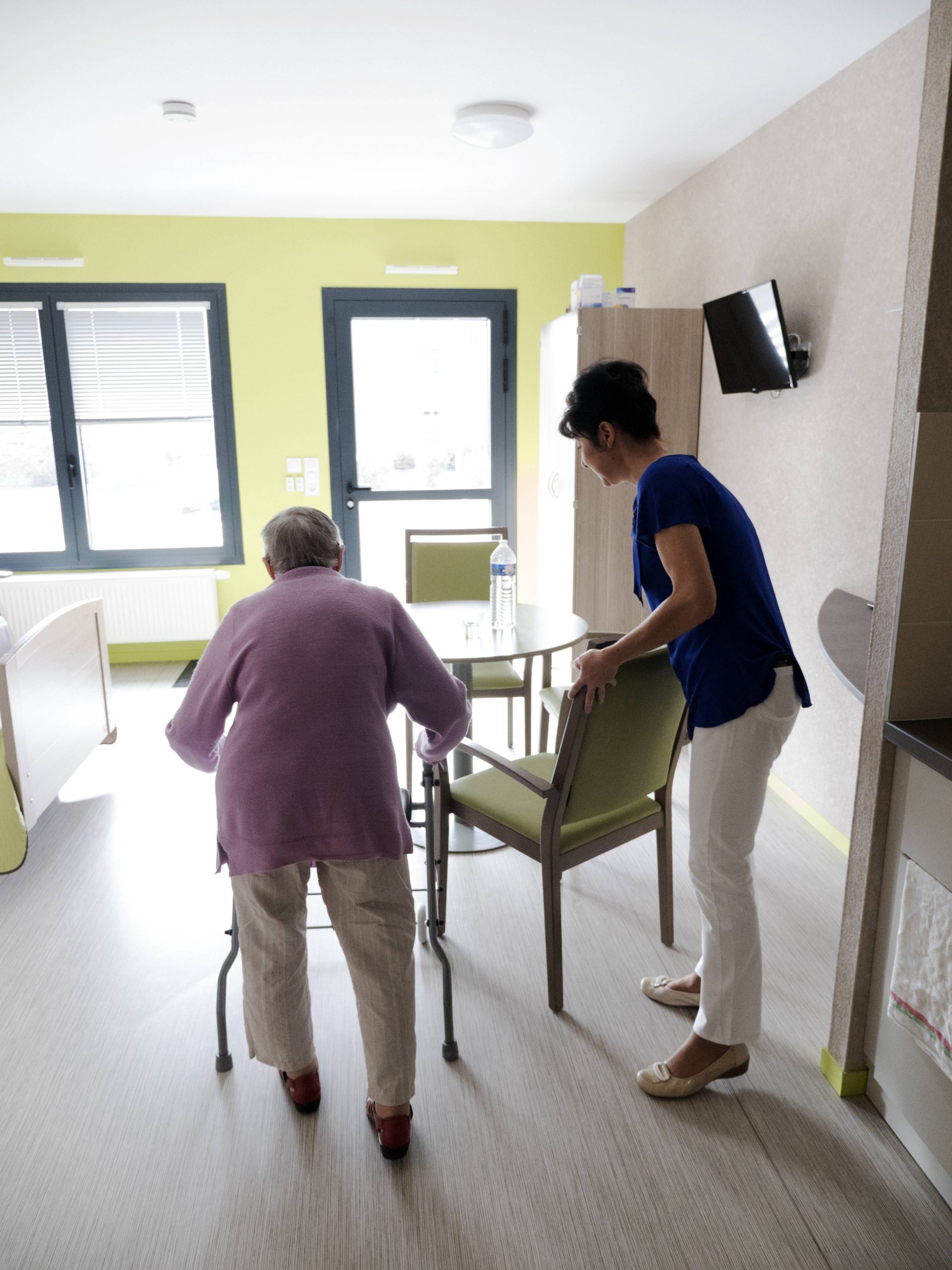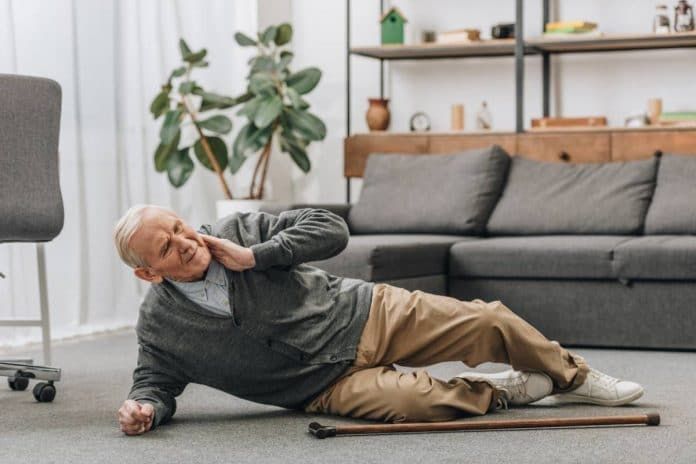Senior: recovering from the cold’a fall
Each year, falls cause nearly 12,000 deaths in France. The risk of falling increases even more when a person reaches 60 years old. Several factors can cause elderly people to fall. In all cases, the repercussions can be dramatic, such as a fractured neck of the femur or a head injury.
Falls usually occur during daily activities, whether it is at home or at work’indoor or outdoor’outside the home. This means that c’is a risk that is unfortunately part of the daily life of our seniors. By identifying these risk factors, you can limit or correct them. What are the causes of’How to deal with a fall in the elderly and how to get up in case of a fall ? The answers in this article.
Phenomenon of falling among seniors: the numbers
Falling is a major problem for seniors. Statistics indicate that each year, approximately 2 million elderly people make a fall. The risk tends to increase with age’age. In fact, among the people who have fallen in one year :
- 35% are between 65 and 80 years old,
- 45% are between the ages of 80 and 90,
- 55% are over 90 years old.
Another figure to remember: 15 to 40% of elderly people experience a fall more than once in their lifetime’once a year.
These figures show that the more the person takes the risk, the more the risk is reduced’The older you are, the more the risk of falling increases. It is therefore important to’Be vigilant and take some precautions against this phenomenon.
The fall is indeed the most important event in the life of an elderly person’one of the first causes of loss of health’autonomy. It also represents the third cause of death in the world’Emergency room admission for seniors. Most people who are hospitalized because of a fall’one fall can no longer return home. In addition’In other words, they must be admitted to senior residences in order to recover’are accompanied on a daily basis. In this way, they can benefit from the services offered in homes for the elderly while living in safety in the home a serene and friendly living environment.

Here is some information and essential data to remember about the fall of the elderly:
- 1 out of 2 people over the age of 80 is a victim of cosmetic surgery’a fall.
- 1 fall out of 2 occurs at home during daily activities.
- Men are more prone to falls in the workplace’outside. They are of’At a younger age than those who have fallen to the ground’indoor.
- The cost of falls’is nearly 2 billion years old’euros per year in France. The costs of a prone position d’a senior victim of’A fall can cost between 2,000 and 8,000.
- According to the’WHO, 646,000 fatal falls occur each year worldwide.
- A immobilization 1 hour on the ground is equivalent to a 50% increased risk of death in the following 12 months.
Falling among seniors: the risks
Elderly people who fall at home or on wet or uneven ground are more likely to fall’In addition, the number of people who have to go to a specialised institution is more frequent than those who do not. D’Moreover, the consequences can be disastrous. According to health professionals, there are several types of falls.
Syncopal falls are caused by fainting or loss of consciousness. A soft fall occurs when the person is able to control the fall and hold on. This cushions the fall while reducing the violence of the fall’impact. A heavy fall indicates that the person has fallen without being able to hold on. The contact with the ground is therefore more violent.
What factors increase the risk of falling? ?
Several factors can increase the risk of falling. Personal factors personal include the’age, age’health status, motor disorders and the’physical condition. The factors behavioral consist mainly of risky or unfit activities. The factors environmental factors According to the number of victims, the most common reasons for not being able to stay in an apartment are an unsuitable apartment, a poorly positioned carpet or a poorly lit staircase, for example.
Note that’It is possible to recover from a fall’Assess the risk of falling’an elderly person in order to be able to move’to protect yourself and to put in place a safety device’possible preventive measures.
What are the main causes of a fall?’a fall ?
The main causes of a fall’The risks of a fall are :
- vision problems’Hearing and / or the other leg’balance,
- vision problems,
- cognitive disorders (Parkinson, Alzheimer, spatial disorientation…),
- musculoskeletal disorders,
- wet or uneven ground.
Recovering from a fall’a fall for a senior : our advice for a good fall’expert
After a fall, many elderly people do not know how to get up by themselves. However, it is not’It is not always pleasant to get up’wait for the’help is on the way. With this in mind, here are some good practices to adopt to recover from a fall’A fall when the person has fallen’we are old.
After the fall, do not get up immediately
If you have fallen, remember to take a few minutes to recover from your emotions. Wait for a’Wait for a piece of furniture to calm down before trying to get up. Take a deep breath to’Make sure you are relaxed. This will help you to think clearly and avoid the risk of injury’to do anything in the morning’impetuosity.
Once relaxed, try to move your arms and legs to check that there are no injuries at this level. If not, or if you feel discomfort or dizziness, wait until it passes before trying to get up.
Adopt the right technique to get back to your feet
If you do fall, try to get up by adopting the following strategies a position on the stomach. To help you, follow these steps:
- Bend your strongest leg. Lean on it and gently tilt your body to the side, so that you can recover on the stomach.
- Use your forearms to support yourself and bend your strongest leg back towards your arms. Put down your knee on the ground and keep the’other leg extended.
- Once in this position, bend your outstretched leg to get into the right position on all fours. Spread your knees for more stability.
- When you are close to the ground’Wait for a piece of furniture, be more calm before trying to move’a chair, or’a railing or other object’If you have a stable object, put both hands on it. Take leaning on the ground’object You have to question yourself to recover slowly, by helping you with your strongest leg.
- Once up and running in balance, turn slowly and sit in a safe place.
If you do not’If you can’t get up, there’s no need to force yourself. Ask for the’s help’a third person. If you have’a remote assistance system, n’Do not hesitate to press the medallion you are wearing.
